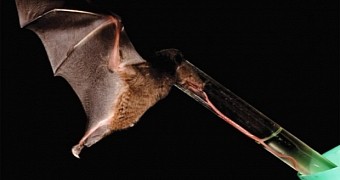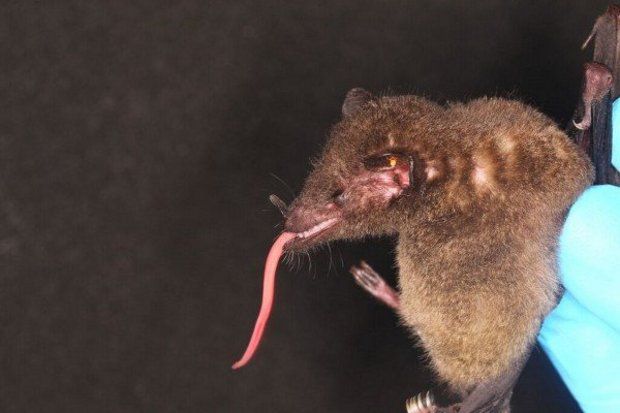A funny-looking bat carrying a tongue one and a half times longer than its entire body was discovered earlier this year by wildlife researchers exploring Bolivia's Madidi National Park.
The species, called Anoura fistulata, was first documented back in 2005, when a specimen was found in Ecuador. Still, it wasn't until this year that the bat was shown to populate the Madidi National Park in Bolivia as well.
The bat uses its tongue to feed
Anoura fistulata relies on its abnormally long tongue to reach into flowers and collect nectar or pollen, which it then eats, specialists with the Wildlife Conservation Society explain.
It also feeds on insects, but probing flowers for their nectar and pollen is kind of its specialty. In fact, wildlife researchers say it is the only species with a tongue long enough to reach into and pollinate a flowering plant with an especially deep bloom, the Centropogon nigricans.
Since you're probably wondering by now, the average Anoura fistulata has a tongue measuring around 8.5 centimeters (about 3.35 inches) from one end to the other. That's the equivalent of 150% the length of its body and the longest tongue in relation to body size among mammals.
Being this big, the tongue doesn't start from inside the bat's mouth or at least its pharynx. Rather, it appears that its base is deep in the animal's rib cage. Giant anteaters and pangolins, whose tongues are too freakishly long, have a similar anatomy, wildlife researchers say.
Studying biodiversity in Bolivia
A couple of months back, on June 5, the Wildlife Conservation Society and collaborators launched an expedition, Identidad Madidi, to study and document the plant and animal species populating Bolivia's Madidi National Park, Science Daily informs.
During this expedition, expected to last for a total of 18 months, researchers will visit 14 sites and study whatever mammals, reptiles, amphibians and fish they encounter.
Although ongoing for just two months now, Identidad Madidi has already led to the discovery of a new frog species with distinctive orange inner thighs. As they explore other sites, scientists expect many other species will pop up.
“We are incredibly proud of the team's efforts across the first two study sites and while we are expecting more new species for science, as important is the astounding number of additional species confirmed for Madidi further establishing it as the world´s most biologically diverse park,” Dr. Robert Wallace of the Wildlife Conservation Society said in a statement.

 14 DAY TRIAL //
14 DAY TRIAL // 

